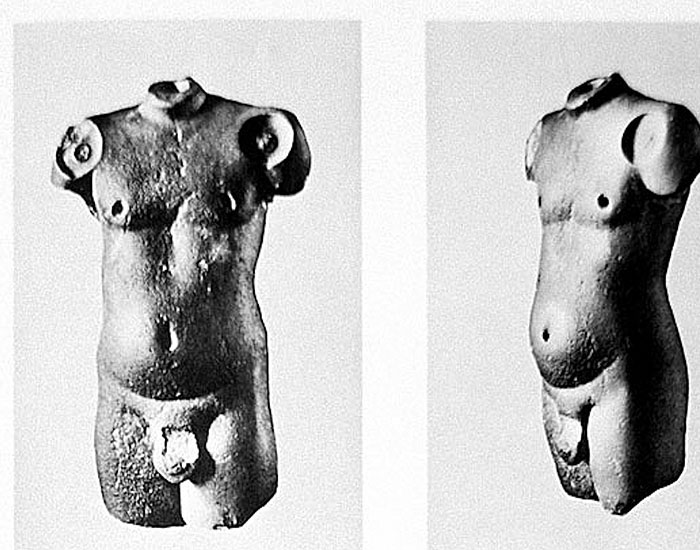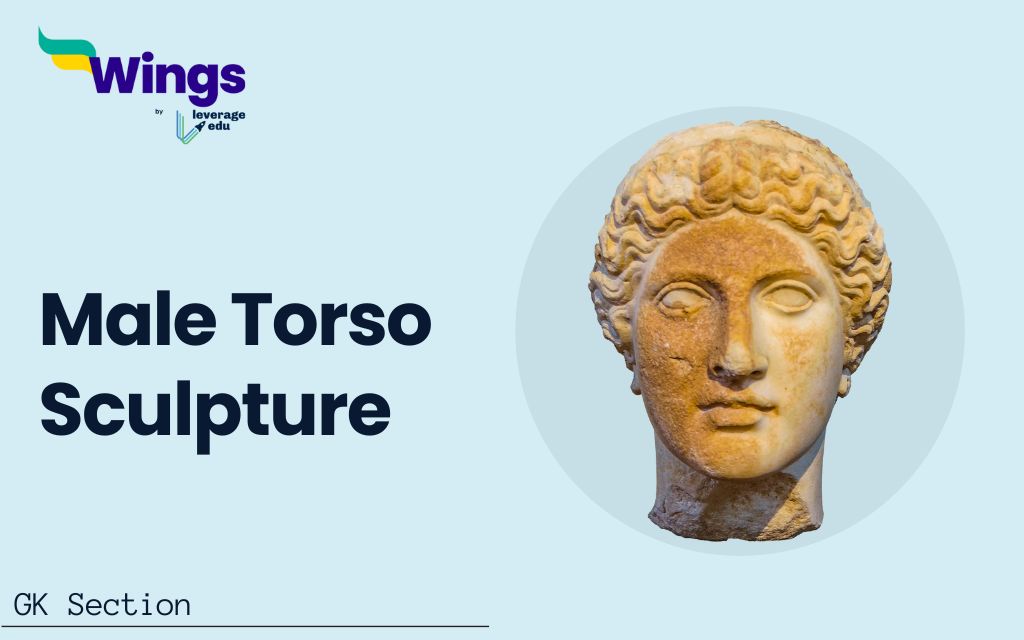The male torso is an important example of prehistoric art discovered during the excavation of the Indus Valley Civilisation. It’s a naked sculpture that is beautifully carved into a human body. This is one of the amazing discoveries of ancient civilisation, highlighting the talents of the artisans of that time. This section will look at the male torso sculptures of the Indus Valley Civilisation, also known as the Harappan Civilisation. This subject is equally crucial for the art and culture section of the UPSC syllabus.
Contents
What is Male Torso?
In human anatomy, the male torso is defined as the area between the neck and the pelvis. It is a complex area of the human body including numerous vital organs. It supports the upper body and offers a foundation for movement and stability. This area is made up of bones, muscles, connective tissues, and organs that work together to perform essential bodily functions.
What is Male Torso Sculpture in Indus Valley Civilization?
The Indus Valley Civilisation, also known as the Harappan Civilisation, flourished between 2500 and 1900 BCE in modern-day Pakistan and northwest India. Among its valuable possessions, the male torso sculpture stands out as a significant piece of art. This sculpture provides insights into the early civilization’s artistic and cultural practices, as well as its technological abilities.

Also Read: Decoding the Harappan Civilization (3300-1300 BCE)
Significance of Male Torso Sculpture
The sculpture of a male torso was discovered in Harappa, one of the Indus Valley Civilization’s major towns. This piece of art is small in size and made from red sandstone. It is well-known for its smooth design and realistic portrayal of the human body. Its discovery provides archaeologists with vital information about Harappan art and society.
It shows that the world’s earliest urban centre possesses the artistic ability to portray its cultural significance. Its realistic portrayal and historical significance make it an essential element in understanding Harappan art and society. Such artefacts allow us to appreciate the Indus Valley Civilization’s legacy and contributions to human creativity and expression.
Features of Male Torso Sculpture
The male torso sculpture stands out among other artefacts because of its distinctive features.
- The sculpture is composed of red sandstone, which is known for its durability and artistic appearance.
- The sculpture has a smooth finish as a result of advanced stone polishing techniques.
- The male torso showed a well-proportioned, muscular figure with no limbs or head.
- The physical characteristics of the body are well depicted, indicating a deep understanding of human anatomy.
- The style focuses on realistic representation.
- The torso lacks ornamentation, focussing on the form of the human body.
- The representation of the human body shows Harappans’ admiration of physical beauty.
- The absence of clothing and jewellery shows a focus on universal form.
- Some experts argue that the torso has a symbolic and religious purpose in representing a deity.
- Others claim that the huge body form is used in ceremonies as an offering.
- The sculpture’s precise cutting and finishing reflect advanced technological skills.
- The use of sandstone reflects the deep knowledge of craftsmanship and artistic skills in the Indus Valley Civilization.
Contemporary Relevance of Male Torso
This historic sculpture inspired the evolution of art in the contemporary or modern era.
- Unlike the heavily decorated and ornate figures of Mesopotamia and Egypt, this sculpture of the Indus Valley Civilisation stands out for its simplicity and minimalistic appearance.
- It highlights the importance of naturalism and the essence of the human form in Indus Civilisation.
- The sculpture is one of the few human figure sculptures discovered in the Indus Valley.
- It is an essential element in understanding the region’s cultural and artistic history.
- It forms the framework for South Asian Art, influencing future artistic advancements in the region.
Related Posts
| The Pashupati Seal of Indus Valley | Arts of the Indus Valley |
| Bronze Age: Facts, Weapons, Civilisations | Know All About The Indian History |
| History of Indian Art: Origins and Milestones | Mesolithic Age: History and Artifacts |
| How to Prepare History for UPSC? | UPSC Prelims History: Previous Year Questions |
FAQs
The male torso sculpture stands out among other artefacts because of its distinctive characteristics. The sculpture is composed of red sandstone and has a smooth finish. The style focuses on realistic representation, indicating a deep understanding of human anatomy.
Among its valuable possessions of Indus Valley Civilization, the male torso sculpture stands out as a significant piece of art. The male torso is defined as the area between the neck and the pelvis.This sculpture provides insights into the early civilization’s artistic and cultural practices, as well as its technological abilities.
The male torso sculpture from the Indus Valley Civilisation is a unique artefact that shows the artistic abilities of ancient civilisations. Its realistic portrayal and historical significance make it an essential element in understanding Harappan art and society. Such artefacts allow us to appreciate the Indus Valley Civilization’s legacy and contributions to human creativity and expression.
This was all about the “Male Torso Sculpture”. For more such informative blogs, check out our UPSCExams Section and Study Material Section, or you can learn more about us by visiting our Indian exams page
 One app for all your study abroad needs
One app for all your study abroad needs














